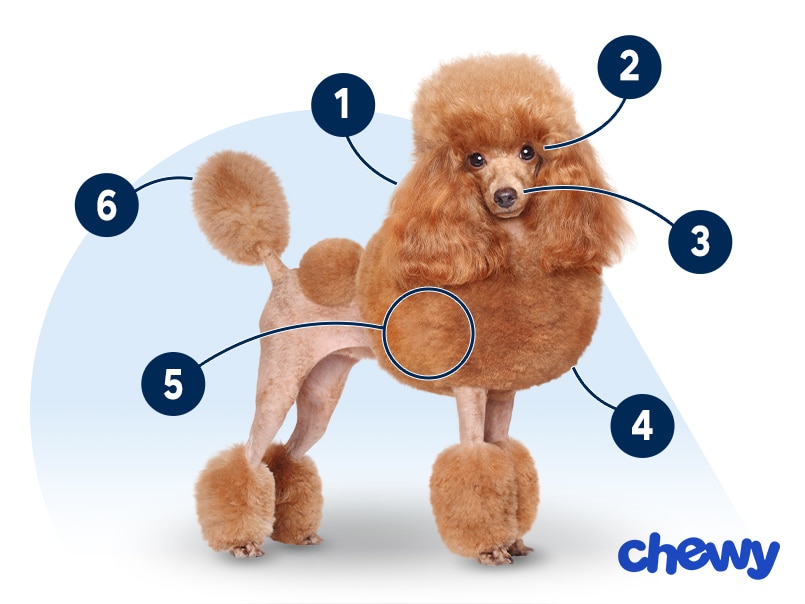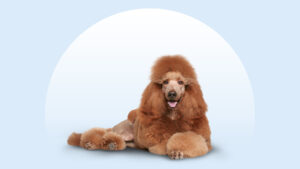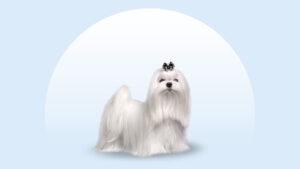Toy Poodle
Updated June 4, 2025
Toy Poodle
Updated June 4, 2025
Tiny but with a big personality, the Toy Poodle is a super smart companion. Their characteristic curls require daily upkeep, but pet parents dedicated to daily grooming will be rewarded with an eager-to-please (and easy to train!) best friend.
Social Butterfly, Intuitive, Eager
4–6 pounds
Under 10 inches
10–18 years
Apricot, Black, Blue, Brown, Cream, Red, Silver, Silver Beige, White, Cafe au Lait, Gray
Gather ’round, because the Toy Poodle loves being the star of the show, especially when their audience rewards their entertaining antics with treats. As long as they’re showered in attention, this pint-size pup is happy.
Toy Poodles are curly-coated dogs with a bright and cheery disposition. These characteristics, along with their impeccable intelligence, mean Toy Poodles easily learn new cues, routines, and tricks. So easily, in fact, that the breed often worked as circus performers in the 18th century.
While the dogs do need daily grooming care, they are so, so small that brushing and other maintenance take very little time out of your schedule. (A Toy Poodle, full grown, weighs less than 10 pounds.)
Toy Poodle Characteristics
Toy Poodle Appearance
The Toy Poodle has a petite but polished appearance. Although they are the smallest variety of the Poodle breeds (the others being the Standard Poodle and the Miniature Poodle), Toys are no less distinguished in their appearance. In fact, the only difference among the three Poodles’ breed standards is size.

- Ears
Toy Poodles have long, feathered ears that hang down to eye level.
- Eyes
A Toy Poodle’s eyes are dark, oval, and set far apart.
- Nose
At the end of their long muzzle, their nose is black or brown.
- Coat Length
Toy Poodles have a curly coat that can grow quite long. Regular trips to the groomer (or pet parents who know how to wield clippers on their own) are a must.
- Coat Color
Toy Poodle colors are wide-ranging, including apricot, black, blue, brown, cream, red, brown, silver, white, and gray.
- Tail
The tail is high-set and carried so it stands up, accentuating this perky pup. It’s often clipped to have a fluffy plume on the end.
Toy Poodle Temperament
A Toy Poodle is a big personality in an itty-bitty package. Although these dogs are less than 10 inches tall, their small frame contains a surprising amount of energy. They’re very smart and need regular exercise and playtime.
Because of this, they make good family dogs—but extra caution must be taken. While Toy Poodles are generally kid-friendly, always supervise interactions with children. Due to the small size of Toy Poodle dogs and puppies, they can be more susceptible to injury than larger dogs.
“One drop or trip can result in a broken leg or worse,” says Carol Dean, an experienced Toy Poodle breeder—and the toy and variety representative for the Poodle Club of America (PCA).
This applies when your Toy Poodle plays with bigger dogs, too. (And when you’re only 4–6 pounds, almost every dog is bigger!). Keep a close eye on your pet to make sure the play doesn’t become too rough.
Overall, Toy Poodles are affectionate attention-seekers who love to spend time with family members. They aren’t likely to let you ignore them for long!
How to Care for a Toy Poodle
The bouncy and affectionate nature of a Toy Poodle means these dogs are ready for just about any activity—as long as it involves you. To properly care for these companion pups, you’ll need to plan on spending regular time each day on exercise, training, and grooming.
Grooming
Training
Diet
Exercise
Environment
Toy Poodle Health
As a healthy dog, the typical Toy Poodle lifespan is 10–18 years. But like all dogs, they can develop certain health conditions over their long life.
- Progressive retinal atrophy (PRA): PRA in dogs causes the rod and cone cells on the retina to break down. An early sign of PRA is difficulty seeing at night, but the condition gradually progresses to total blindness. There is no cure for PRA.
- Patellar luxation: The patella is the kneecap, and when it slips out of place, this is called patellar luxation. You might see your Toy Poodle limping or walking with a bunny-hop gait—these are common symptoms. The condition often corrects itself on its own, but severe cases might need surgery.
- Dental disease: Small breeds like the Toy Poodle often develop dental issues because their tiny mouths cause tooth overcrowding and tartar buildup. Preventive care—like brushing your dog’s teeth, offering dental chews, and using water additives to protect their teeth—is important. Your vet will recommend professional dental cleanings as needed.
With routine veterinary care, a healthy diet, and enough exercise, Toy Poodles are one of the longest-living dog breeds.
Toy Poodle History
The history of the Toy Poodle begins with the Standard Poodle. These dogs are much larger (up to 70 pounds!) and worked as water retrievers for duck hunters, according to the Poodle Club of America.
The striking appearance of the Poodle created a desire for a smaller companion dog that would retain the same intelligence and attributes. This led to the Miniature Poodle, which was developed in France and became a favorite of nobility and traveling performers alike.
In the 1900s, the even more diminutive Toy Poodle was developed in the United States. But all three Poodle sizes share similar personality traits and a nearly identical appearance—despite the major size difference.






